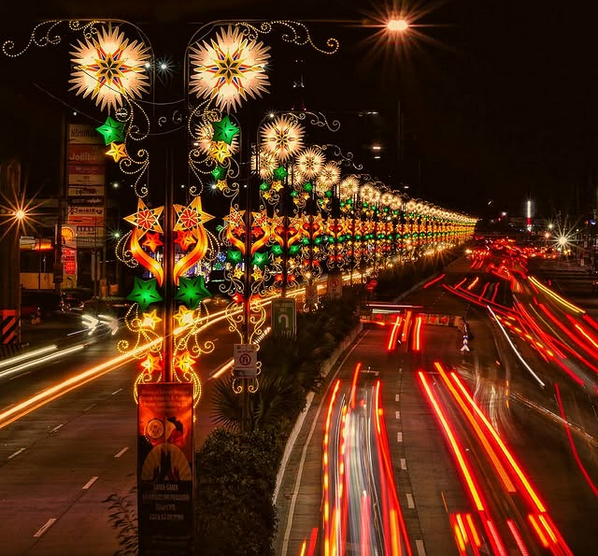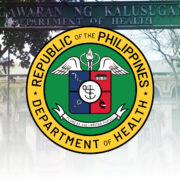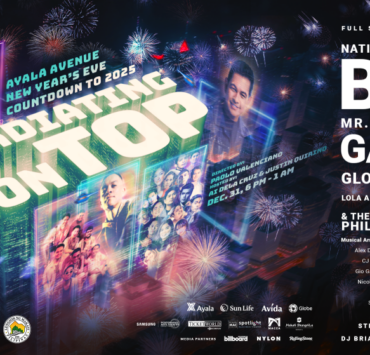Holiday street lighting and sustainable streetscapes

Christmas in the Philippines is always celebrated with great preparations and festivities.
The streets, malls, and other public places are adorned with colorful and sparkling lights, Christmas trees, and lanterns. While we delight in these colorful decorations, especially the bright street lights, they also produce a great impact on the environment.

Cultural significance of Christmas street lighting
The tradition of decorating streets with Christmas lights and ornaments can be traced back to the Spanish colonial period. These decorations are often displayed on street corners, town plazas, and government buildings.
In particular, the parol or star-shaped lantern, representing the Star of Bethlehem, has become a central element in Filipino homes and public spaces. The Christmas lighting displays meanwhile help foster a sense of community and shared celebration, uniting people from different walks of life in the spirit of the season.
Initially, these lights were simple and modest, but as the years passed, they grew in scale, complexity, and creativity.
The first noticeable and quite spectacular Christmas street lighting decorations were displayed along Ayala Avenue in Makati City in the early 1990s—said to be designed by the office of Francisco Mañosa, National Artist for Architecture. This set the trends which other cities followed.

Encouraging walkability through lighting
While well-constructed sidewalks, street layout, and accessibility all affect walkability, the ease of strolling in a particular area, aided by seasonal lighting especially during the holidays, may greatly contribute in making a public area more pedestrian-friendly.
For instance, Christmas lights provide a welcoming ambiance that promotes walking, enhance safety by improving visibility, and lower the chance of mishaps. These lights, which are positioned thoughtfully along roadways, buildings, and trees, often provide a much-needed aesthetic boost.

Understanding sustainable streetscapes
Sustainable streetscapes are essential for reducing the negative effects of urbanization in quickly expanding areas like Metro Manila, which struggle with traffic jams, pollution, urban heat island effect and lack of green space.
Sustainable materials like recycled and permeable pavement to address flooding and water scarcity; energy-efficient lighting; pedestrian-focused infrastructure with bike lanes and improved public transport; green spaces like parks and shade trees that absorb carbon dioxide and enhance biodiversity; and efficient waste management through recycling and sorting programs are all important components of a sustainable streetscape.

Challenge of sustainability
Traditional Christmas lighting displays, particularly those using incandescent bulbs, consume a substantial amount of electricity. In the Philippines, where electricity prices can be high and power supply issues are common, these energy-intensive lights can place additional strain on the national grid.
Christmas lights and decorations can also generate significant waste. Many of these are made from plastic, metal, and other non-biodegradable materials. Once the holiday season is over, these items are often discarded which can end up in landfills or worse, in waterways and oceans.
Excessive use of artificial lighting also contributes to light pollution. It can interfere with the natural environment—disrupting ecosystems and affecting the behavior of nocturnal animals.
Light pollution can also have negative effects on human health. Light trespass and light clutter produced by sparkling lights can affect the circadian rhythm or “biological clocks” of residents (Sullivan, R. et. al., 2023).

Shift toward sustainable Christmas lighting
A growing awareness of these problems has brought forward increased effort toward adopting sustainable street Christmas lighting practices.
The use of energy-efficient LED lights has become a popular alternative to incandescent bulbs in Christmas lighting displays, while solar-powered Christmas lights are also gaining popularity in the country.
The use of eco-friendly materials is another significant development in sustainable Christmas decorations. Traditional Christmas trees, parols, and ornaments made from plastic and synthetic materials are being replaced with items made from natural, recycled, or biodegradable materials.

For example, bamboo, coconut shells, and upcycled materials are increasingly being used in the design of Christmas decorations. To help minimize waste, people are encouraged to participate in recycling/upcycling programs and responsible disposal practices.
Although street Christmas lighting has long been a beloved tradition, it is clear that adopting more eco-friendly practices is necessary to preserve the spirit of the holiday season while minimizing the impact on the environment.
References:
https://psa.gov.ph/content/religious-affiliation-philippines-2020-census-population-and-housing; https://thehappyandgayexperience.wordpress.com/2019/12/02/christmas-in-our-hearts; Sullivan, R. et. al. (2023). Night Sky and Dark Environments: Best Management Practices for Artificial Light at Night on BLM-Managed Lands. Tech Note 457. U.S. Department of the Interior, Bureau of Land Management, National Operations Center, Denver, CO; https://www.energy.gov/energysaver/led-lighting
The author is a pioneering landscape architect and retired associate professor at the University of the Philippines Diliman College of Architecture.

















